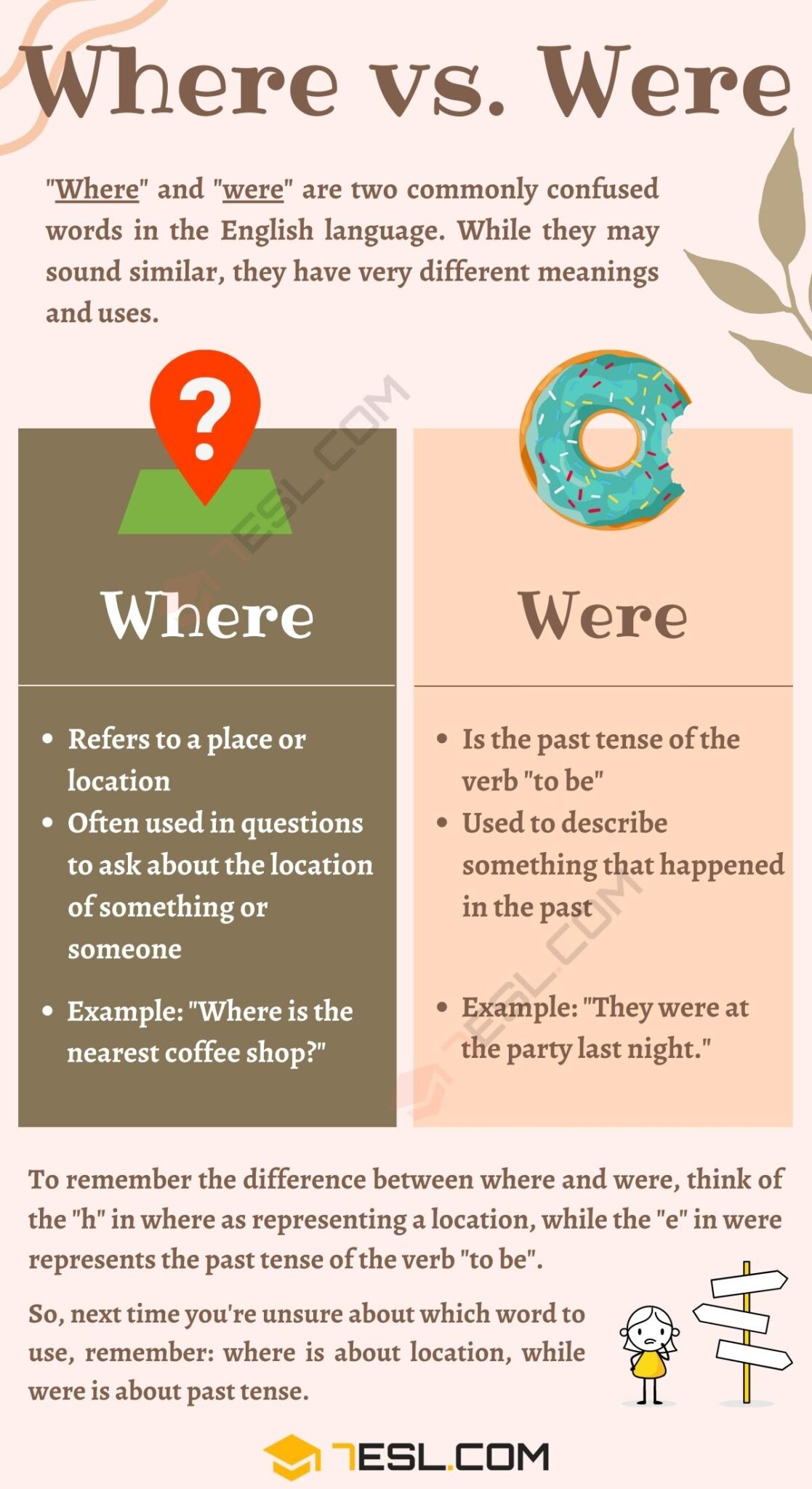The English language can be quite perplexing, especially when it comes to verb tenses. One common area of confusion lies in the distinction between "was" and "were." Both words serve as past tense forms of the verb "to be," but their usage is dictated by the subject they accompany. Understanding the difference between was and were is essential for mastering English grammar and enhancing your communication skills.
In this article, we will delve into the nuances of "was" and "were," exploring their grammatical functions and providing examples to clarify their correct applications. We will also address common misconceptions and answer frequently asked questions to ensure that you grasp this fundamental aspect of English. By the end, you will be equipped to confidently differentiate between these two forms and use them appropriately in your writing and speaking.
Whether you are a student trying to improve your language skills, an English teacher seeking to clarify these concepts for your students, or simply someone interested in refining your grammar, this comprehensive guide will illuminate the differences and provide practical tips for mastering the use of was and were.
What is the Basic Definition of Was and Were?
"Was" and "were" are both past tense forms of the verb "to be." They are used to describe a state of being or existence in the past. The choice between the two depends on the subject of the sentence:
- "Was" is used with singular subjects (I, he, she, it).
- "Were" is used with plural subjects (you, we, they) and the singular subject "you."
When is "Was" Used?
Understanding when to use "was" involves recognizing its association with singular subjects. Here are some examples:
- I was at the park yesterday.
- She was excited about the concert.
- He was the best player on the team.
What are Some Examples of "Was" in Context?
To illustrate the usage of "was," consider the following sentences:
- The dog was barking all night.
- It was a beautiful day for a picnic.
- The movie was entertaining and well-received.
When is "Were" Used?
In contrast, "were" is utilized with plural subjects, including "you," regardless of whether it is singular or plural. Here are some examples:
- They were playing soccer in the park.
- You were late to the meeting.
- We were on vacation last week.
What are Some Examples of "Were" in Context?
To further clarify the usage of "were," consider the following sentences:
- The students were studying for their exams.
- We were amazed by the fireworks display.
- They were having dinner when the phone rang.
What are the Common Mistakes with Was and Were?
Even native English speakers sometimes mix up "was" and "were." Here are some common mistakes:
- Using "was" with plural subjects (e.g., "They was happy" instead of "They were happy").
- Using "were" with singular subjects incorrectly (e.g., "He were tired" instead of "He was tired").
How to Avoid Confusing Was and Were?
To avoid confusion between "was" and "were," keep these tips in mind:
- Identify the subject of your sentence.
- Determine whether the subject is singular or plural.
- Choose "was" for singular subjects and "were" for plural subjects.
How Does Context Affect the Usage of Was and Were?
Context plays a crucial role in determining whether to use "was" or "were." For example, in conditional sentences, “were” is often used regardless of the subject:
- If I were a bird, I would fly high.
- If he were here, he would help us.
What is the Subjunctive Mood and its Relation to Were?
The subjunctive mood is a grammatical structure used to express wishes, hypotheticals, or conditions contrary to fact. In this case, "were" is used for all subjects, which can be confusing:
- I wish it were summer all year round.
- Even if he were rich, he wouldn’t be happy.
Are There Any Exceptions to the Rules?
While the rules for "was" and "were" are generally straightforward, there are a few exceptions and unique cases to consider:
- In informal speech, "was" may sometimes be used instead of "were" (e.g., "If I was you").
- In dialects or regional variations, the rules may differ slightly.
How Can You Practice Using Was and Were?
To improve your understanding and application of "was" and "were," consider the following practice methods:
- Write sentences using both "was" and "were" to describe past events.
- Engage in conversations with others, paying attention to the correct usage.
- Take grammar quizzes or exercises focused on verb tenses.
Conclusion: Mastering the Difference Between Was and Were
Understanding the difference between was and were is a fundamental aspect of English grammar that significantly enhances your communication skills. By recognizing the distinctions in usage based on subject plurality, practicing with examples, and being mindful of exceptions, you will become more confident in your ability to use these verbs correctly. Remember, mastery comes with practice, so keep engaging with the language, whether through writing, speaking, or listening. With time, the difference between was and were will become second nature to you!



ncG1vNJzZmixn6PAtr7IZqWeq6RjsLC5jpycpZ2Sp7a1xZJom6Kelpq%2FprrCnmSbnaSssqa6jLCYrGWRo7Fuw8SrnGegpKK5